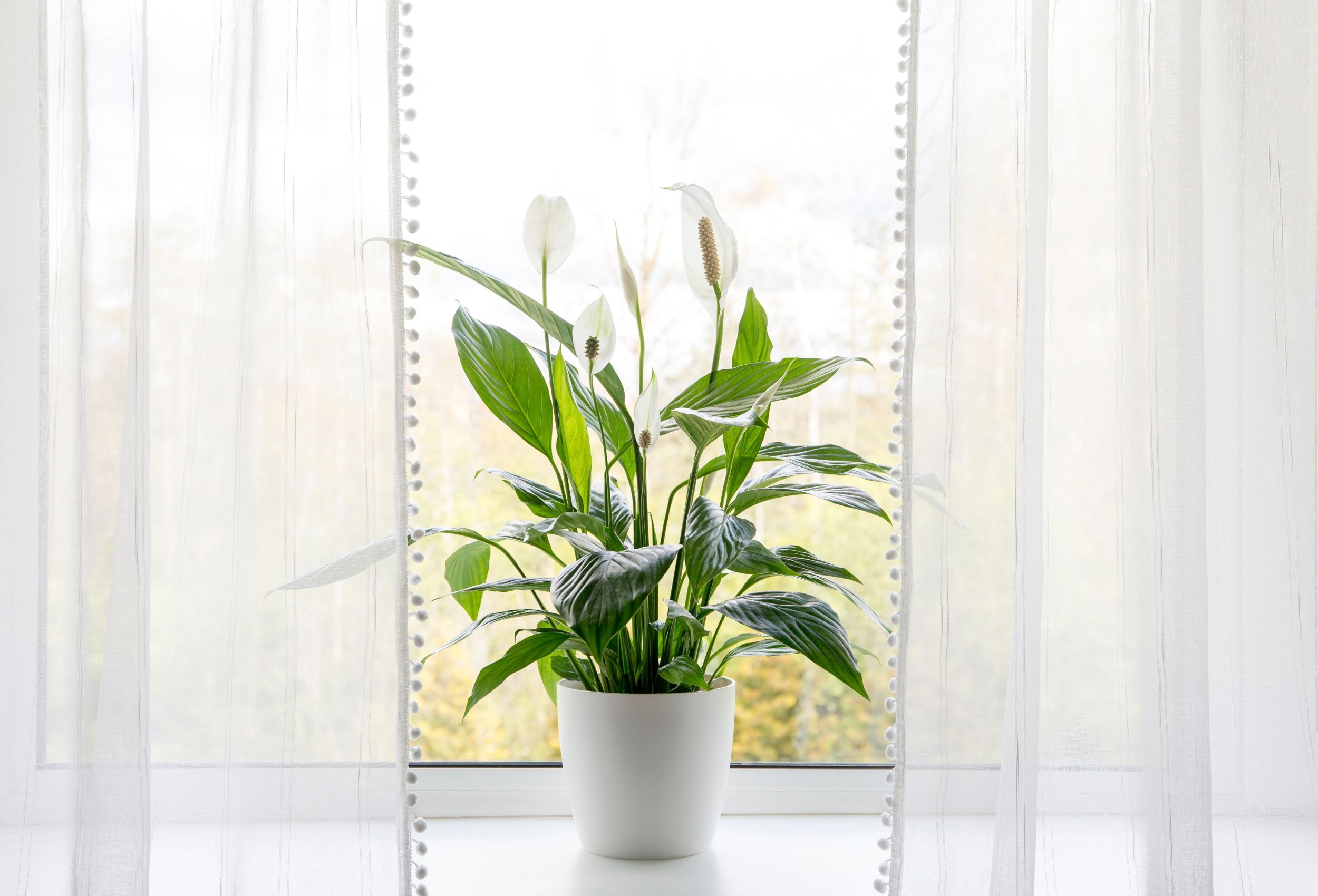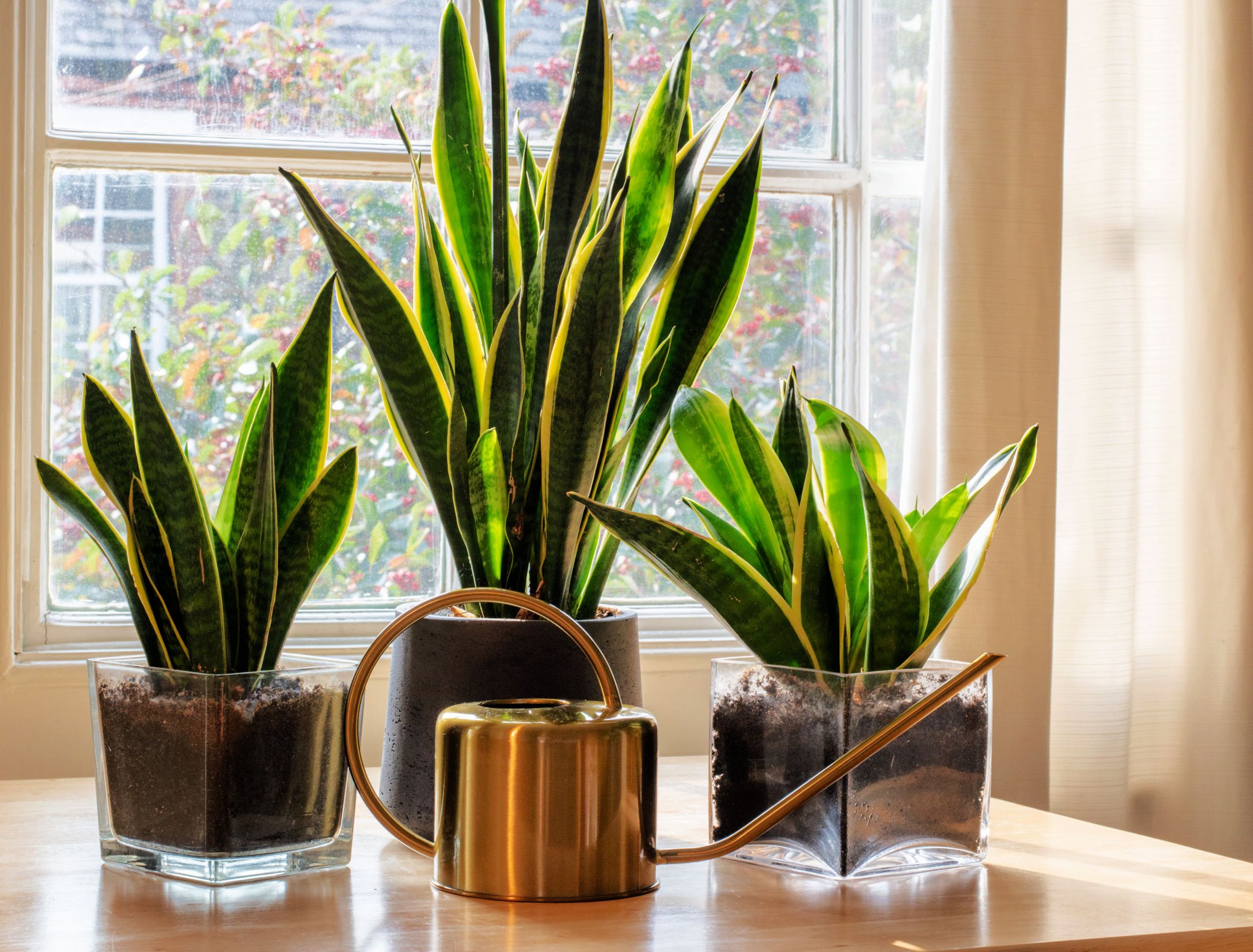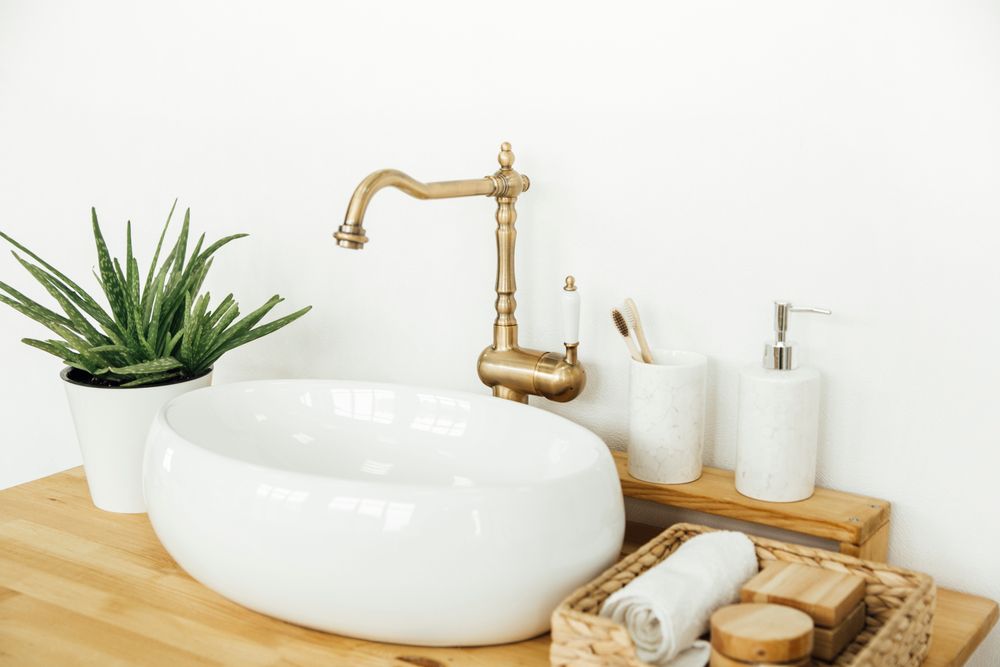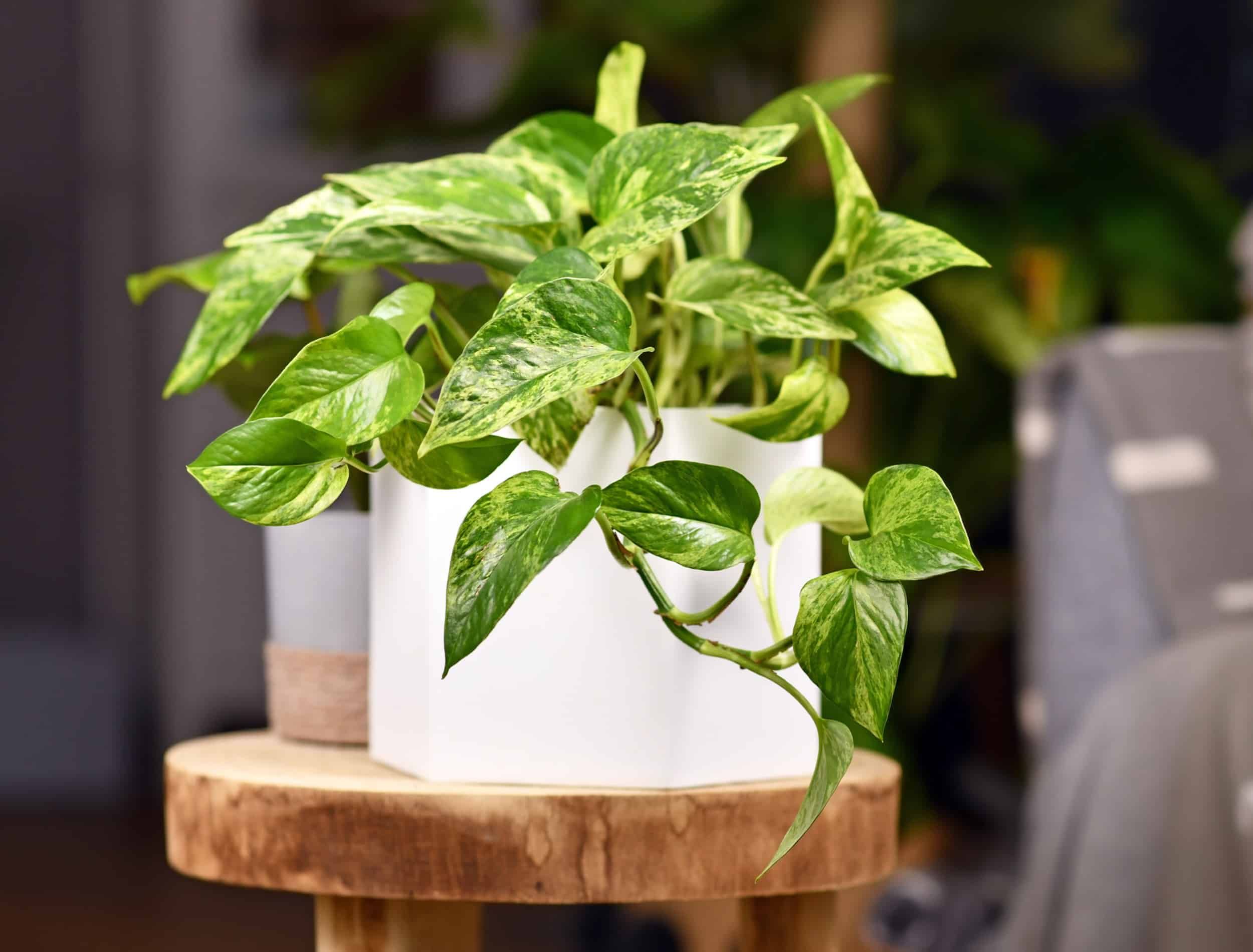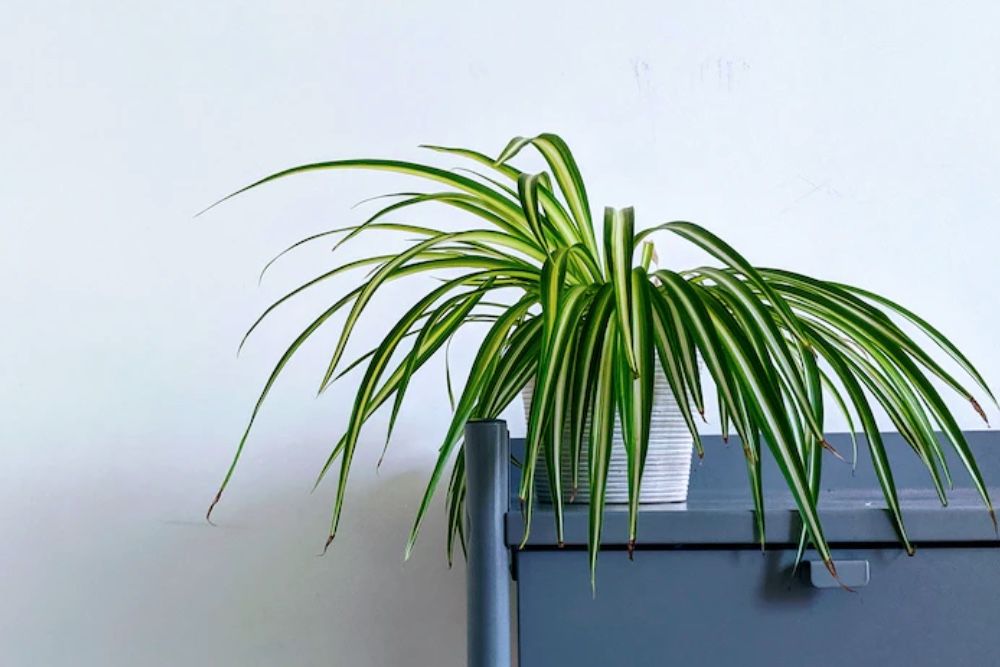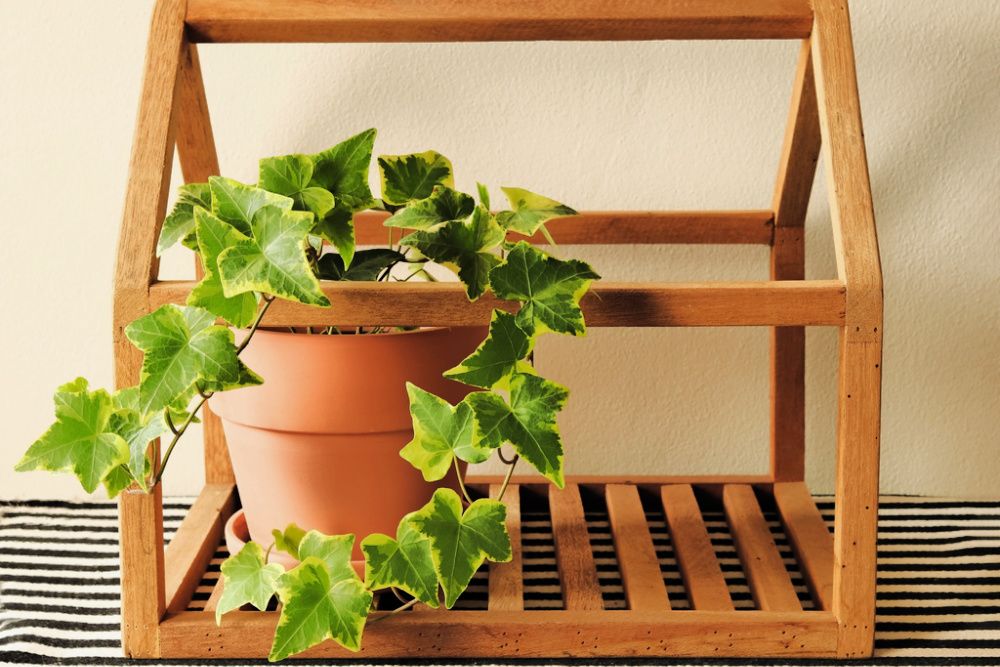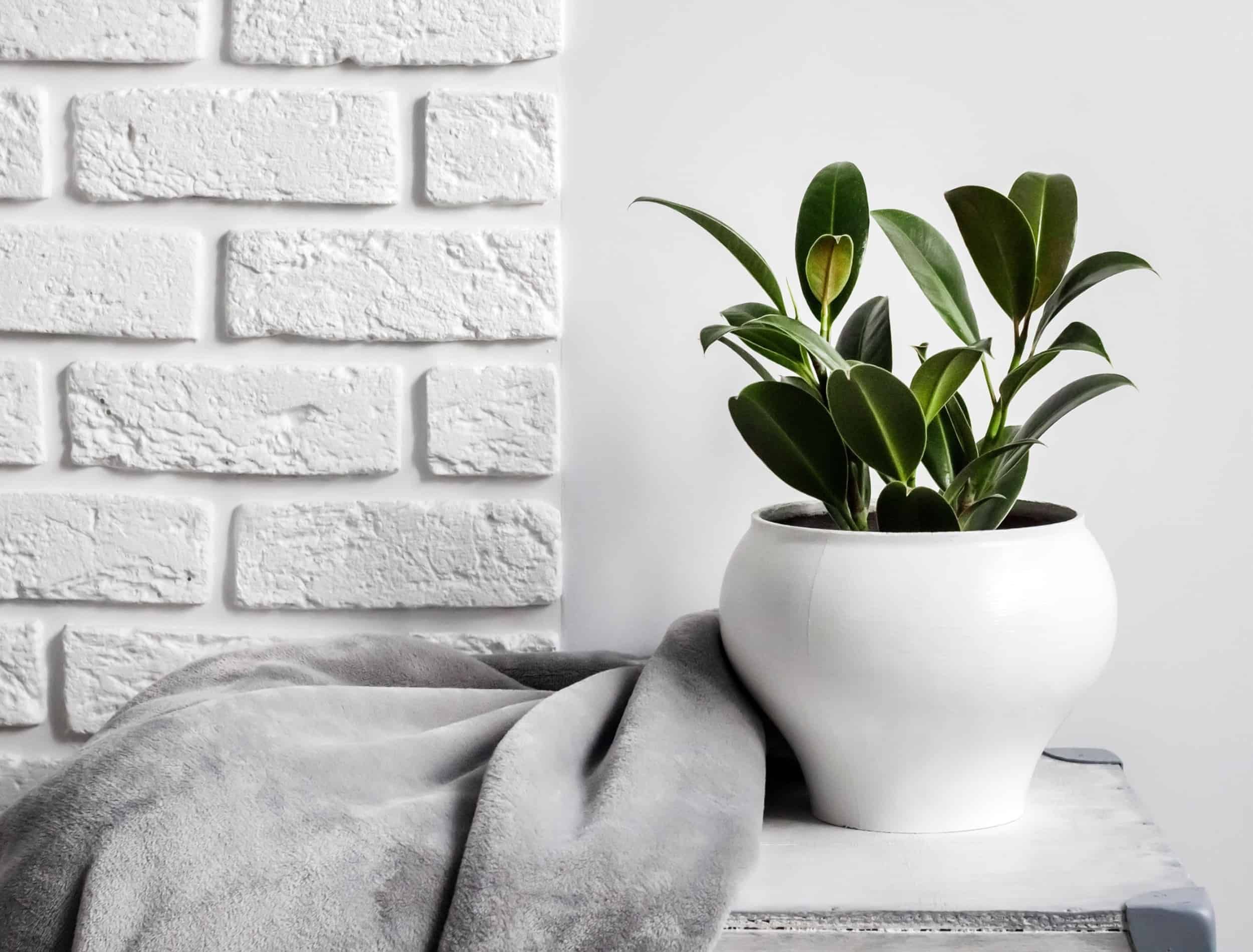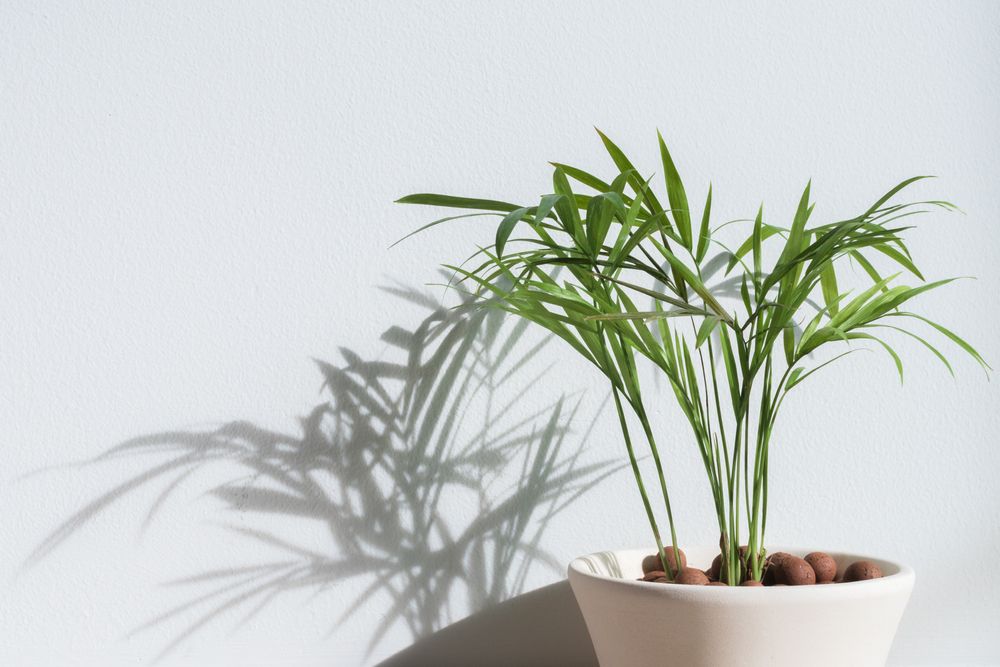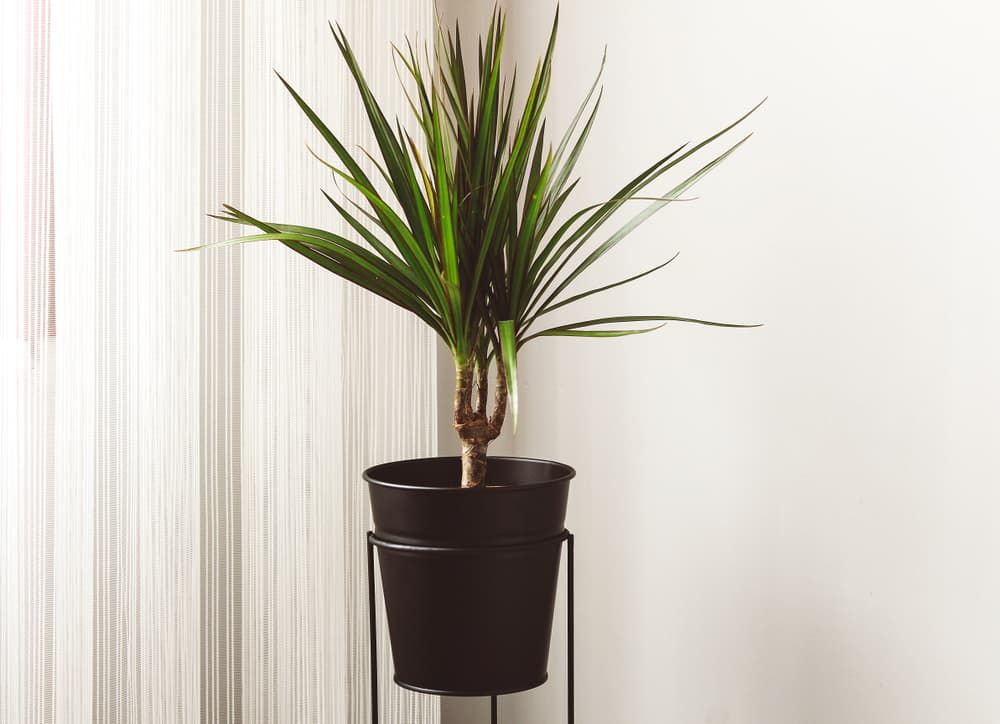Add charm to any indoor space with a countless variety of houseplants, many of which boast beneficial properties like air purification and aesthetics.
The lack of airflow in most indoor spaces breeds a buildup of air pollution. These pollutants arise from chemicals emitted from furnishings, paints, synthetic building materials, glues, and even cleaning solutions. Establishing a plan to improve the air quality in your home is key; as the build-up of indoor air pollutants can lead to health issues like asthma.
Luckily there are some houseplants that help improve the air quality of confined spaces by absorbing harmful toxins in the air. Decorate your indoor spaces with a variety of living air purifiers!
Snake Plant
Image credits: Grumpy Cow Studios via Shutterstock
Snake plants are a striking addition to any indoor space. With tall, leathery leaves that grow up to 2 meters in height, these beauties are fantastic for interior decorating! Snake plants are poisonous when ingested, so choose an appropriate location where your family can safely enjoy its air-purifying properties!
As snake plants are considered a succulent, it is important to treat them as such and not overwaters. That said, snake plants tolerate many different temperatures and light conditions. These guys are a great low-maintenance option for air purification!
Snake plants eliminate formaldehyde, trichloroethylene, benzene, and xylene toxins from the air in your home.
Aloe Vera
Image credits: Isaeva Studio via Shuterstock
Aloe vera plants are a low-maintenance air purification option for novice growers. In addition to riding the air of toxins, the thick, fleshy leaves of an aloe plant store water and produce an anti-inflammatory gel used to treat burns.
These easy-to-grow succulents require deep yet infrequent watering. Allow the soil to dry out between waterings every 2 to 3 weeks. During the winter, reduce your watering frequency by about half. Aloe vera enjoys warm, sunny locations in your indoor space.
Use aloe to soothe your skin and eliminate formaldehyde and benzene toxins from the air.
Peace Lily
Image credits: Grumpy Cow Studios via Canva
Peace lilies garner their name from their white "flag of peace" blooms that pop up among glossy green foliage. Keep these easy-to-care-for plants in an inaccessible area, as they are toxic to humans and animals.
Peace lilies thrive in low-light conditions, which many other plants do not tolerate. They signal a need for water by aggressively drooping leaves. A weekly watering schedule to keep the soil moist is just needed for these low-maintenance plants.
Peace Lilies eliminate harmful toxins such as benzene, trichloroethylene, xylene, ammonia, formaldehyde, and carbon monoxide from your indoor air.
Pothos
Image credit: Firn via Shutterstock
Pothos, also known as "devil's ivy" or "golden pothos," is my favorite air purifier on this list! These gorgeous vines grow like crazy indoors, adding a jungle vibe to your space. There are several varieties of pothos that produce solid or variegated green leaves. Hang these guys high where they won't be tempting, as they are toxic to humans and animals.
Pothos are crazy hardy. They tolerate low-light spaces such as basements, bathrooms, and bedrooms. Their vines grow up to 8 feet long and can be tamed by either winding or trimming the tendrils. Water your pothos when the soil feels dry 1/4 of the way down into its container.
Allow your pothos to wind their way around your home, eliminating toxins like benzene, formaldehyde, toluene, carbon monoxide, and xylene from the air.
Spider Plant
Image Credits: Lucian Alexe via Unsplash
A Spider plant is a low-maintenance air purifier that grows quickly indoors. They look especially beautiful, spilling out of a hanging basket with their long leaves, spidery shoots, and white blooms. This plant is a safe, non-toxic option for your family home.
Spider plants thrive in many temperatures when provided with bright indirect sunlight. Watering should take place about 2 to 3 times per week to allow the soil to dry somewhat.
Add a spider plant to your space to eliminate toxins like formaldehyde, benzene, and xylene from the surrounding air.
English Ivy
Image credits: Phuttharak via Shutterstock
English ivy is an elegant evergreen climber plant that looks simply decadent, draping from a hanging basket. You can train an English ivy vine to twist around your indoor space creating an outdoor feel inside. It is best to place ivy somewhere inaccessible, as it is toxic to humans and animals.
With proper care, an English ivy plant lives for several years. Depending on the variety, these vines do well in full shade to full sunlight environments. English ivy thrives in small pots when they are crowded together. Ensure to water generously during the growing season; then taper off to ensure you don't overwater your plant in the winter.
English ivy eliminates many toxins from the air, including benzene, carbon monoxide, formaldehyde, and trichloroethylene.
Chrysanthemums
Image credit: genniebee512 via Pixabay
To add some color, flowering chrysanthemums are beautiful blooms that look great in flower arrangements as well as potted indoors to help keep your air clean. Keep mums away from your cats and dogs, as they are toxic when ingested.
Chrysanthemums prefer bright indirect sunlight and moist soil. With proper care, a plant can keep its blooms for up to 6 weeks.
Use potted mums in your home to eliminate formaldehyde, xylene, benzene, and ammonia from the air.
Rubber Plants
Image credit: TYNA via Shutterstock
Rubber plants are evergreen trees that produce large, glossy leaves along their trunks. Prune and wipe down the leaves to improve your plant's aesthetic. Grow your rubber plant in a pet and child-free location as they are poisonous when ingested.
Rubber plants may be grown in small pots or larger containers like trees. Place your container in bright, filtered sunlight and keep the soil moist. A watering schedule of about once per week is best.
Adding rubber plants to your indoor space helps eliminate toxins such as carbon monoxide, formaldehyde, trichloroethylene, xylene, and benzene from the air.
Bamboo Palm
Image credits: Jirayu Chaichomlert via Shutterstock
Known for reaching heights between 4 and 12 feet, bamboo palms are a mighty air-purification option for your indoor space. Not only do they eliminate harmful toxins, but bamboo palms also add moisture to the air during dry winter months.
Bamboo palms grow well in indirect or filtered sunlight to partial shade. Place your plant in an area with good air circulation and water to keep the soil moist. Mist your bamboo palm's leaves regularly to ward off pests like spider mites.
Bamboo palms are one of the many species of palm that purify the air. Other varieties include Broad Lady palms, Kentia palms, Areca palms, and Dwarf Date palms. Place a bamboo palm in an enclosed space to eliminate harmful toxins, including benzene, formaldehyde, carbon monoxide, xylene, chloroform, and trichloroethylene from the air.
Dracaenas
Image credits: ibrahimdogan via Shutterstock
Dracaenas come in a variety of different shapes, colors, and sizes. These beauties are great space fillers that also boast air purification properties. Place a potted dracaena in an inaccessible area to pets and enjoy its low-maintenance care.
Simply choose a home in indirect sunlight and keep the soil moist. Adhere to a watering schedule of about once per week during the warmer months; then reduce the frequency when the weather cools to prevent root rot.
Dracaenas are notorious for eliminating harmful chemicals, including formaldehyde, xylene, toluene, benzene, and trichloroethylene from their indoor environment.
Clear the Air
Enliven your space and clean your indoor air with a variety of air-purifying houseplants. There are countless varieties, including low-maintenance options for those without a green thumb! Breathe in the difference these plants make as they absorb harmful toxins from the air and enrich it with oxygen. Remember to note a plant's toxicity before finding a proper location!

